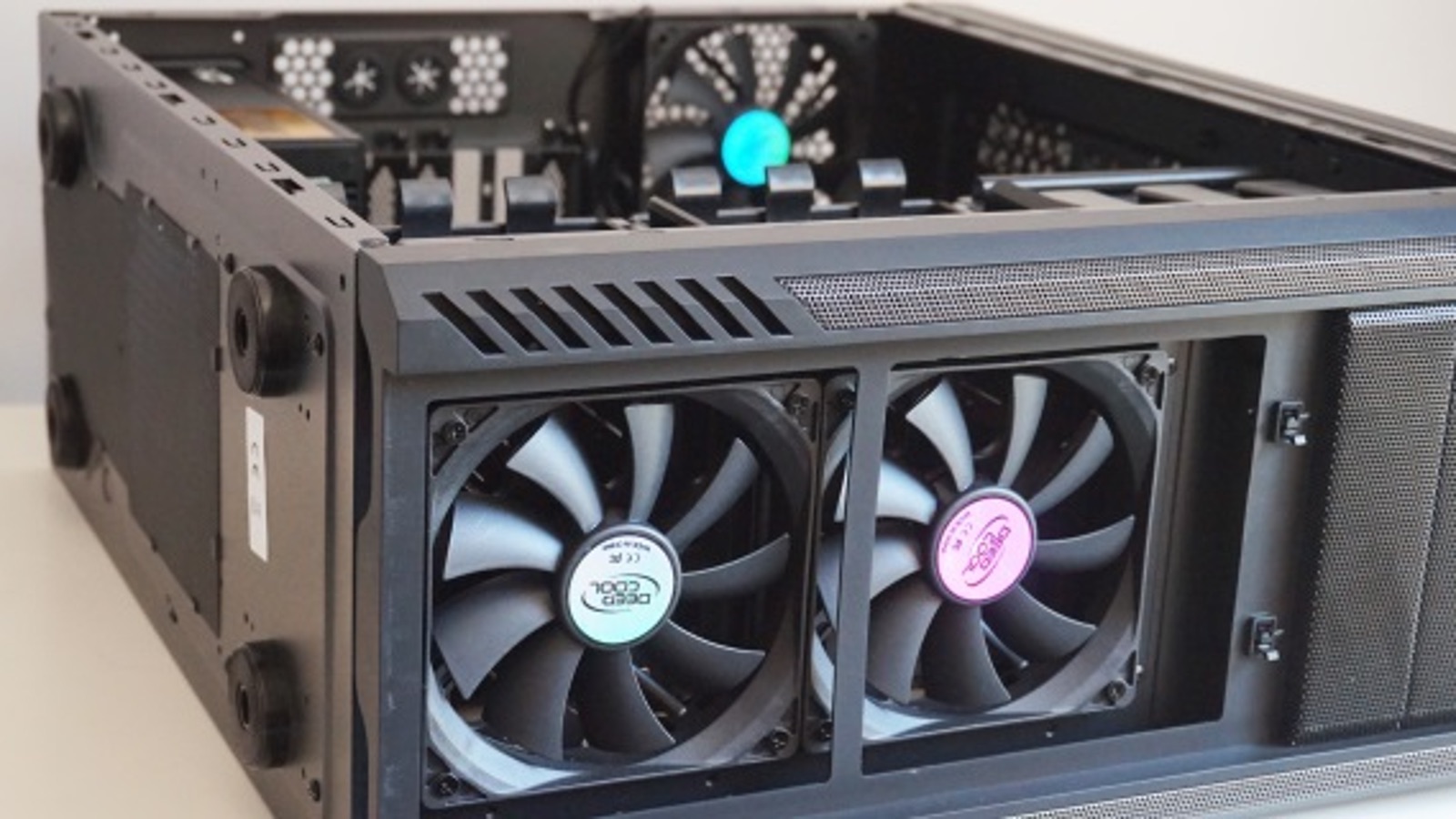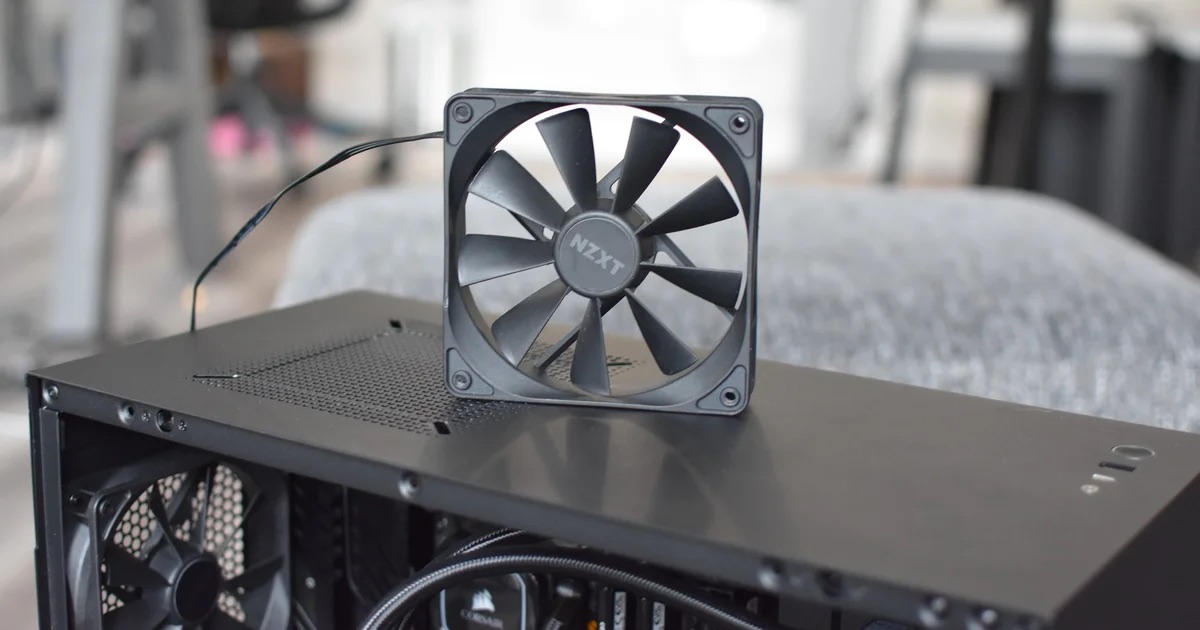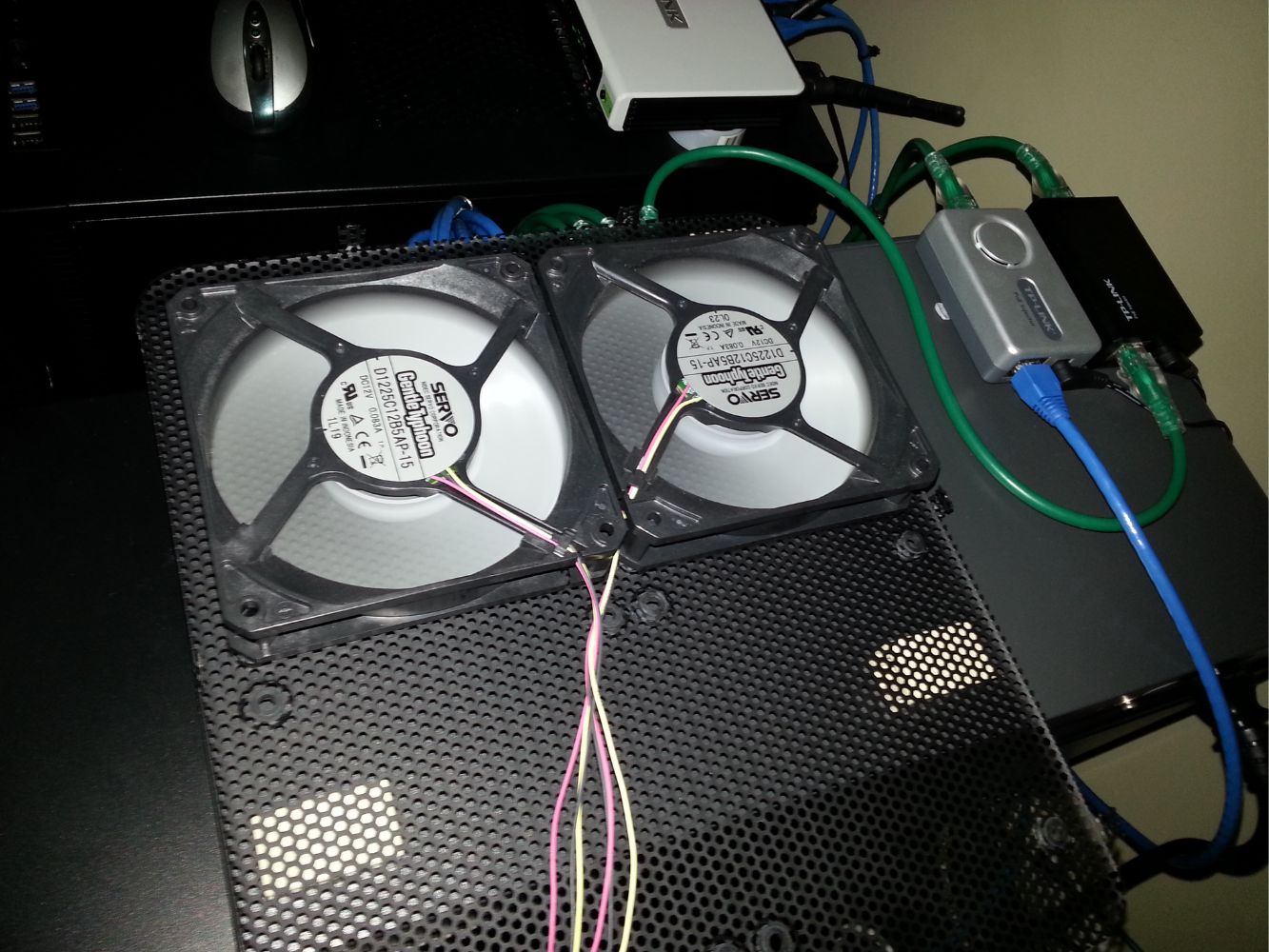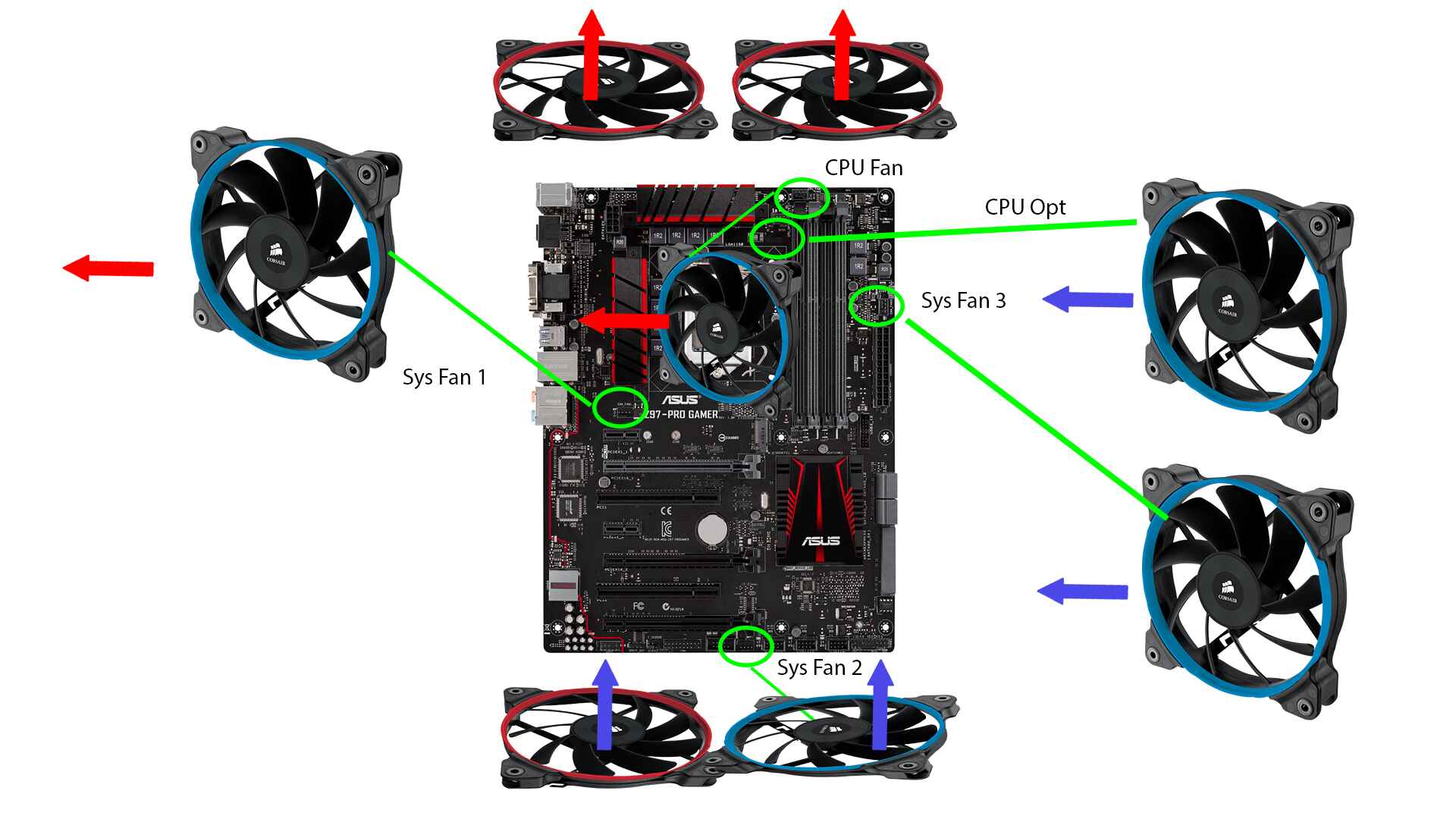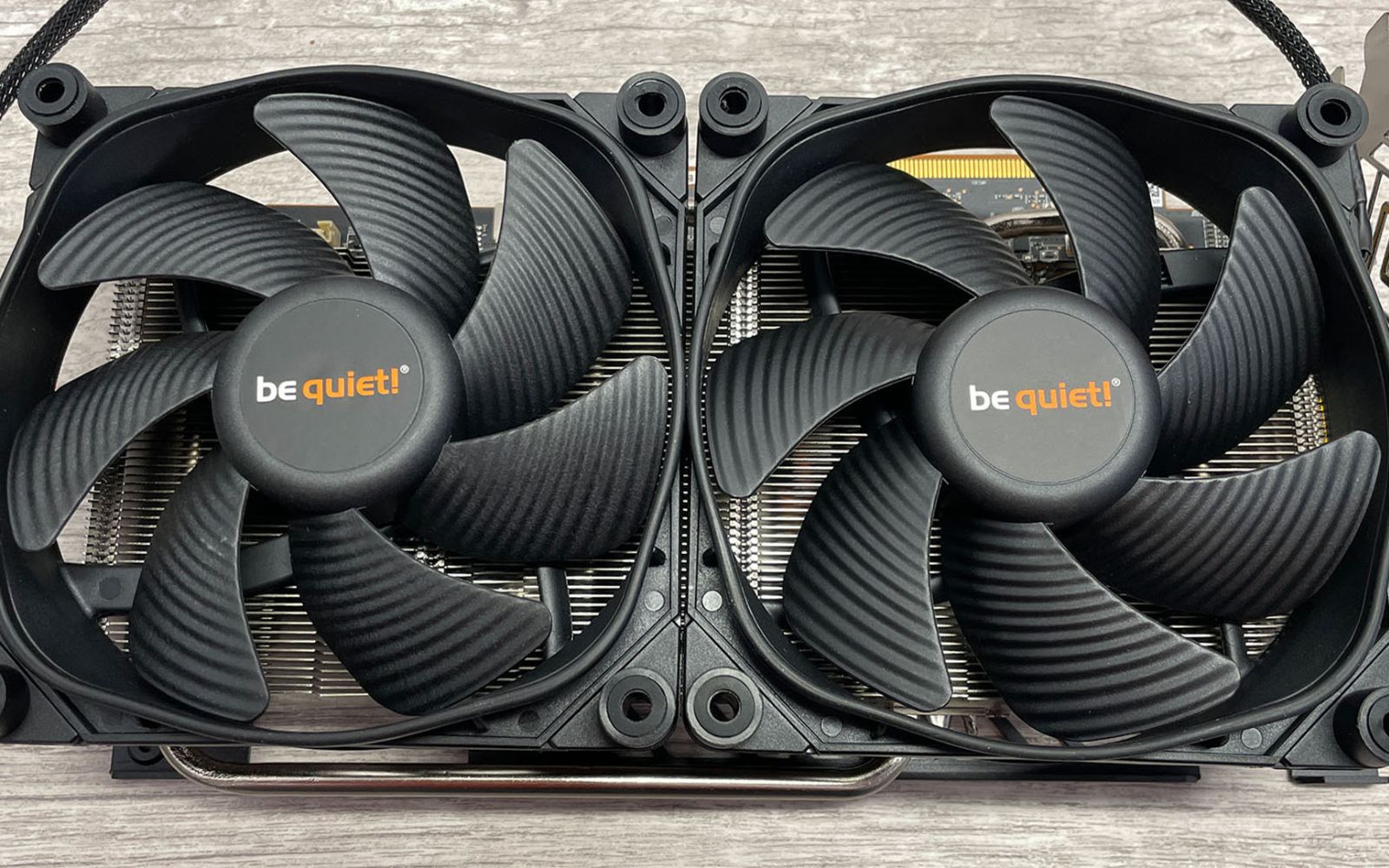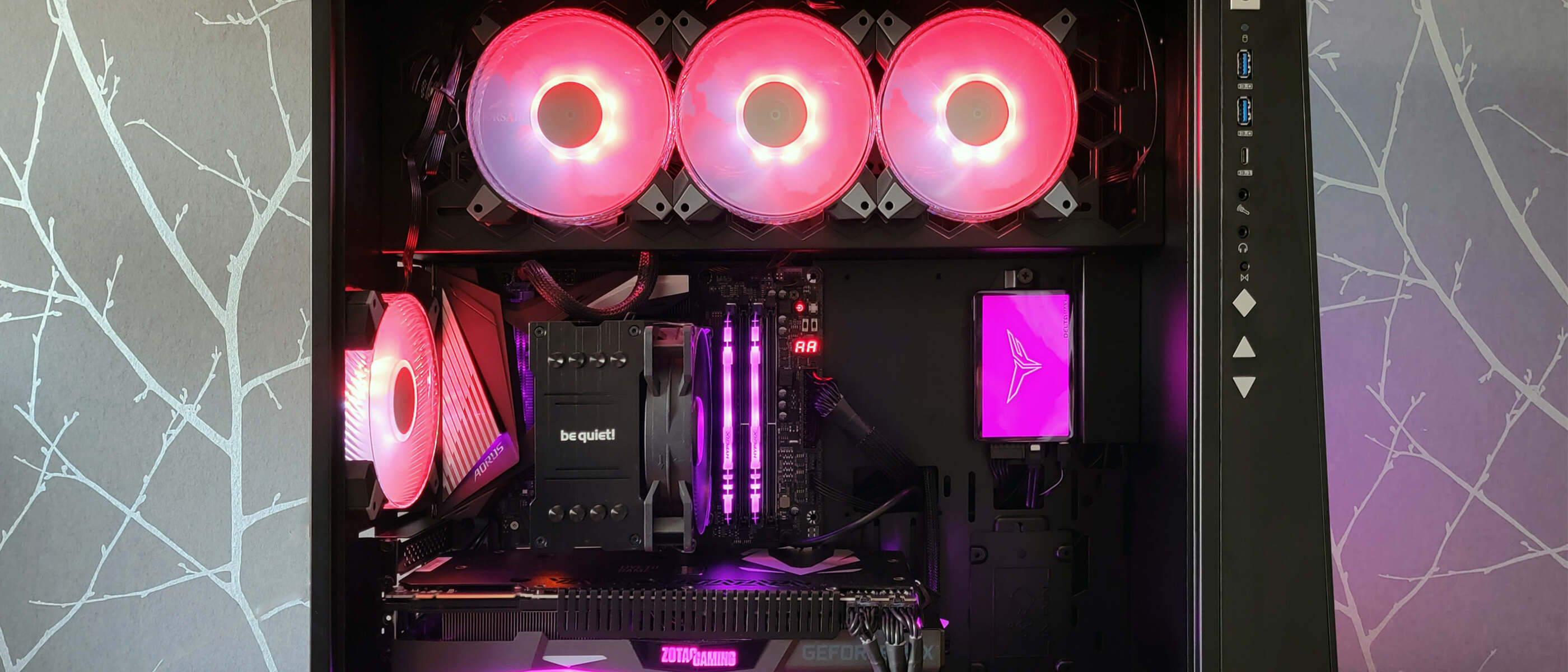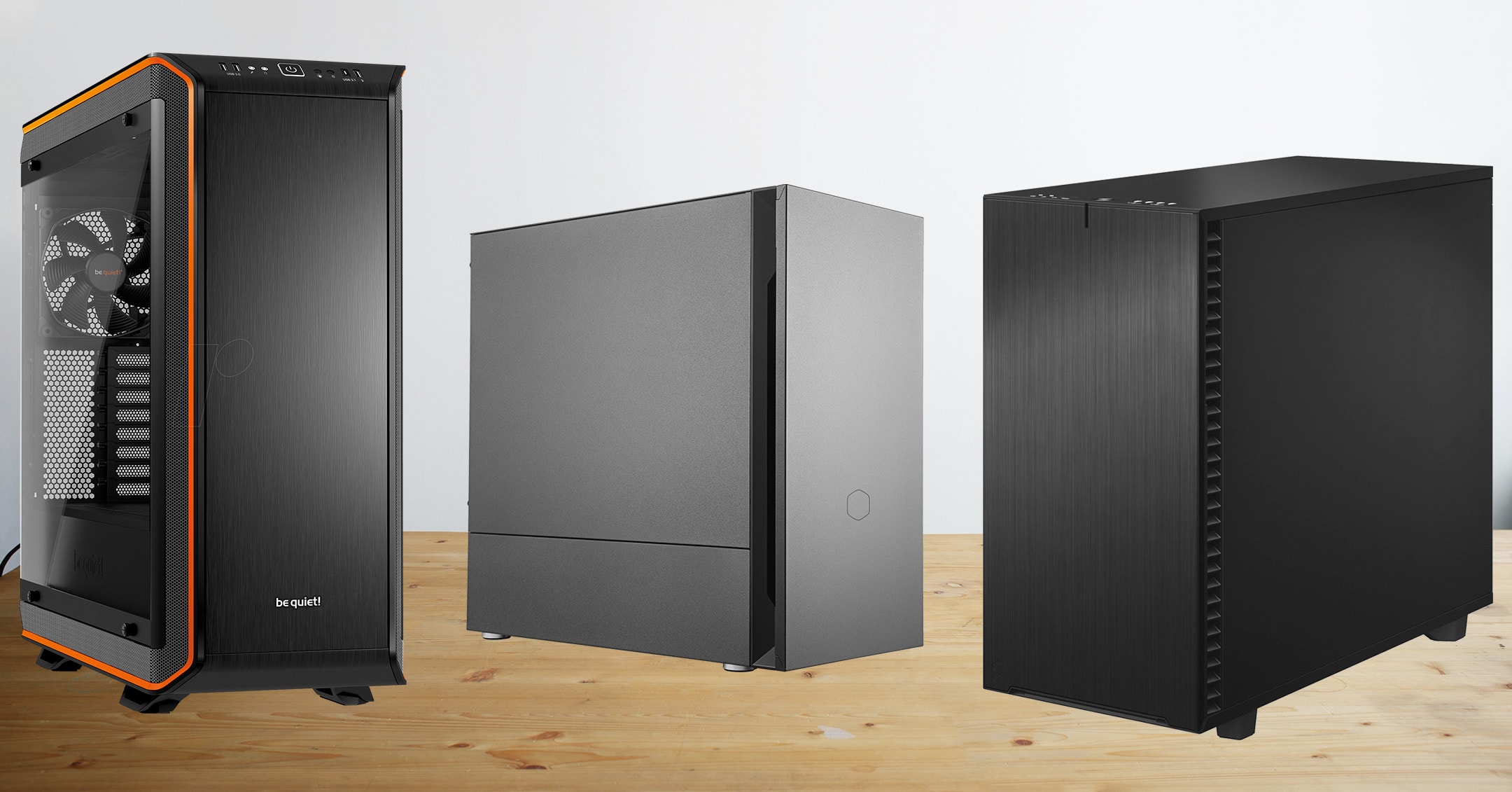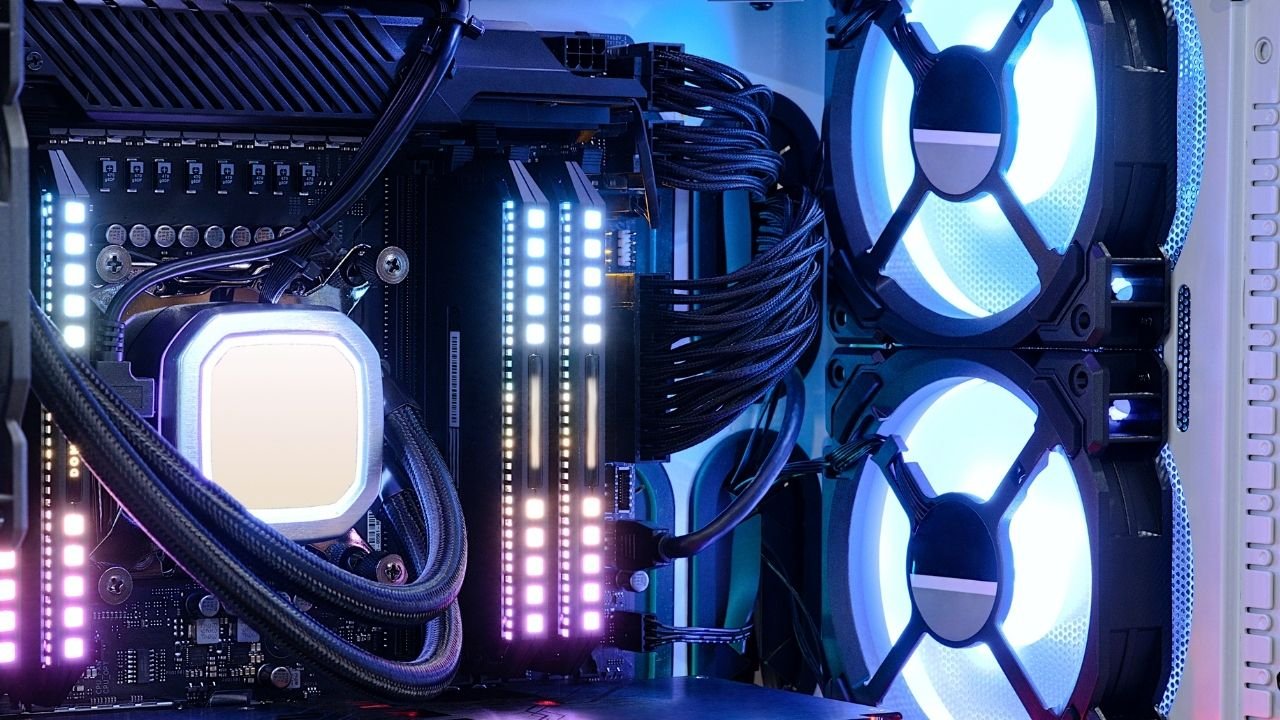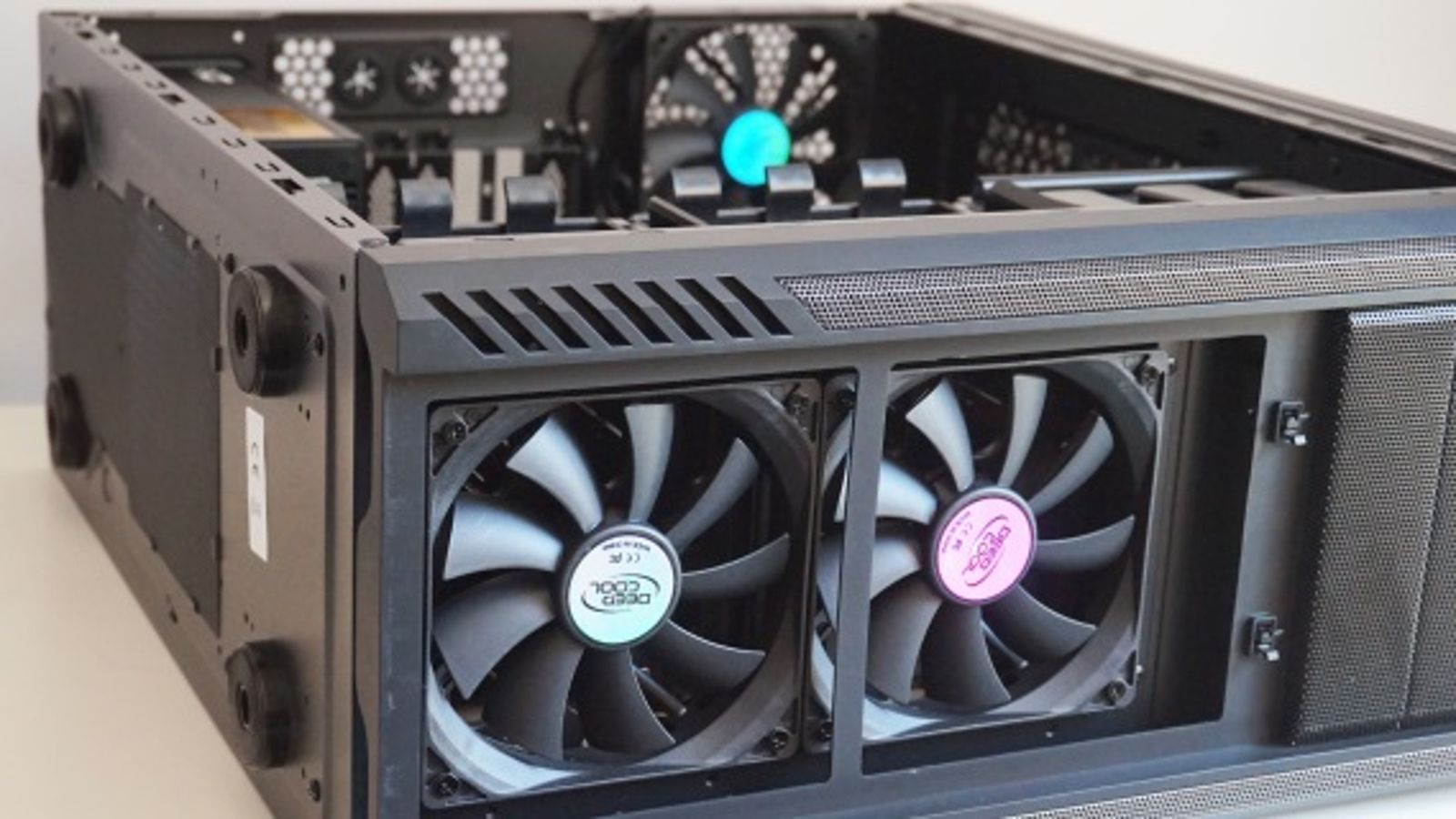Introduction
Welcome to the world of PC gaming and performance computing! If you’re new to the realm of computer hardware, you may have heard the term “PC case fan” tossed around. But what exactly is a PC case fan, and why is it important?
A PC case fan is an essential component of a computer system. It is a small, rotating device that is installed within the computer chassis or case to provide airflow. The primary purpose of a PC case fan is to keep the internal components of the computer cool by expelling hot air and bringing in fresh, cool air.
As PC components become more advanced and powerful, they generate more heat. Without proper cooling, the components can overheat, leading to decreased performance, instability, and even permanent damage. This is where PC case fans come into play.
PC case fans play a crucial role in maintaining optimum operating temperatures for various hardware components such as the CPU, graphics card, and motherboard. By efficiently dissipating heat, case fans help to prevent thermal throttling, which is when the performance of these components is limited to protect them from overheating.
In addition to preventing overheating, PC case fans also contribute to overall system stability and longevity. Cooler components generally have a longer lifespan and are less prone to failure. By keeping the system cool, case fans can also help to reduce fan noise, as components don’t have to work as hard to maintain a safe temperature.
Now that we understand the importance of PC case fans, let’s take a closer look at the different types available and factors to consider when choosing the right fan for your system.
What is a PC Case Fan?
A PC case fan, also known as a computer case fan or chassis fan, is a vital component of a computer system. It is designed to provide active cooling by circulating air within the computer case. The primary function of a PC case fan is to expel hot air generated by the internal components and bring in fresh, cool air to maintain optimal operating temperatures.
PC case fans typically consist of a small electric motor and fan blades enclosed in a plastic or metal frame. They come in various sizes, ranging from 80mm to 200mm, with the most common sizes being 120mm and 140mm. The fan blades are specially designed to move air efficiently and create sufficient airflow within the case.
These fans are strategically placed in different locations within the computer case, such as the front, rear, top, and side panels, to ensure proper airflow across various components. They work in conjunction with other cooling components like CPU coolers, graphics card fans, and power supply fans to maintain an optimal thermal balance.
PC case fans operate using direct current (DC) and are typically connected to the system’s power supply or motherboard. They are controlled either manually through a dedicated fan controller or automatically through the motherboard’s fan control system, which adjusts the fan speed based on temperature sensors.
In addition to their primary function of cooling the system, PC case fans also play a role in reducing the accumulation of dust and dirt inside the case. Many case fans are equipped with a dust filter to prevent debris from entering the system, thereby improving overall system cleanliness and reducing the need for frequent maintenance.
Overall, PC case fans are essential for maintaining optimal operating temperatures, improving system stability, prolonging the lifespan of internal components, and reducing fan noise. They are an integral part of any computer system, particularly in gaming rigs and high-performance setups where efficient cooling is crucial.
The Importance of PC Case Fans
PC case fans are incredibly important for the overall health and performance of your computer system. They serve several crucial functions that contribute to the longevity, stability, and efficiency of your hardware.
First and foremost, PC case fans are responsible for cooling the internal components of your computer. As components such as the CPU, GPU, and motherboard work harder and generate more heat, the case fans help dissipate that heat and maintain optimal operating temperatures. This is crucial because excessive heat can lead to thermal throttling, where components reduce their performance to prevent overheating, resulting in decreased system efficiency.
By actively circulating air inside the computer case, PC case fans prevent the build-up of hot spots and ensure a consistent and balanced airflow. This helps in maintaining a stable temperature for all the components, which is essential for their proper functioning and longevity. Cooler components not only perform better, but they are also less likely to experience heat-related issues and premature failure.
Furthermore, PC case fans contribute to the overall system stability. When components are kept cool, they operate within their intended thermal limits and are less prone to errors, crashes, and system instability. This is particularly important for demanding tasks such as gaming or intensive applications that put a heavy load on the hardware.
Another advantage of PC case fans is their role in noise reduction. When components heat up, their cooling fans have to work harder, resulting in increased fan speed and noise. By efficiently cooling the components, PC case fans enable them to operate at lower temperatures, reducing the need for excessive fan speed and minimizing noise levels. This is especially beneficial for those looking for a quiet computing experience without sacrificing performance.
Moreover, PC case fans help in maintaining a clean and dust-free environment inside the computer case. Many case fans are equipped with dust filters that trap dust particles, preventing them from settling on the components and clogging the system. Regularly cleaning or replacing these filters can significantly extend the lifespan of your hardware and reduce the risk of overheating caused by dust accumulation.
In summary, PC case fans play a crucial role in cooling, stability, and overall system performance. They ensure that your components operate within their safe temperature range, reduce the risk of thermal throttling and instability, minimize noise levels, and help maintain a clean and dust-free environment. Investing in quality PC case fans is a small yet significant step towards optimizing the performance and lifespan of your computer system.
Different Types of PC Case Fans
PC case fans come in various types, each designed to meet specific cooling requirements and fit different computer case configurations. Understanding the different types of PC case fans can help you make an informed decision when choosing the right fan for your system. Let’s explore some of the most common types:
- Airflow Direction: PC case fans can either be intake or exhaust fans. Intake fans bring fresh, cool air into the case, while exhaust fans expel hot air from the case. It’s important to strike a balance between intake and exhaust fans to maintain optimal airflow within the case.
- Size: PC case fans are available in various sizes, typically measured in millimeters (mm). Common sizes include 80mm, 120mm, and 140mm. Larger fans generally move more air at lower RPMs, resulting in quieter operation and better airflow.
- Noise Level: Fans are often categorized based on their noise level, measured in decibels (dB). Fans with lower dB ratings produce less noise, making them ideal for those seeking a quieter computing experience.
- Fan Speed: The fan speed, measured in rotations per minute (RPM), determines how fast the fan blades rotate. Fans with higher RPMs tend to move more air, but they can also generate more noise. Adjustable fan speeds allow customization based on cooling requirements and noise preferences.
- Fan Bearing Type: PC case fans use different bearing types to reduce friction and enhance longevity. Common bearing types include sleeve bearings (budget-friendly but less durable), rifle bearings (better durability and lifespan), and ball bearings (highly durable and long-lasting).
- LED Lighting: For those who want to add a touch of aesthetics to their system, LED-lit case fans are available. These fans feature built-in LEDs that provide vibrant illumination, adding visual appeal to your computer case.
- Fan Control: Some PC case fans offer built-in fan control mechanisms, allowing you to manually adjust fan speeds according to your cooling requirements. This level of control can help achieve a balance between cooling performance and noise levels.
It’s important to choose PC case fans that match your specific needs and system requirements. Consider factors such as the available fan slots in your case, the desired airflow direction, noise preferences, and cooling performance. Assessing these factors will help you select the appropriate types and configurations of PC case fans to optimize your system’s cooling efficiency.
Factors to Consider When Choosing a PC Case Fan
Choosing the right PC case fan is crucial to ensure efficient cooling and optimal performance of your computer system. Consider the following factors when selecting a PC case fan:
- Airflow: Determine whether you need an intake or exhaust fan, or a combination of both, based on your system’s cooling requirements. Proper airflow is essential for maintaining a balanced temperature inside the case.
- Size: Consider the available fan slots in your computer case and choose a fan size that fits. Common sizes include 80mm, 120mm, and 140mm. Larger fans generally move more air at lower RPMs, resulting in quieter operation and better airflow.
- Noise Level: Take into account the noise level of the fan, measured in decibels (dB). If you value a quiet computing experience, choose fans with lower dB ratings. Look for fans specifically designed to minimize noise, such as those with anti-vibration features.
- Fan Speed: Consider the fan’s speed, measured in rotations per minute (RPM). Higher RPM fans tend to move more air but can generate more noise. Look for fans with adjustable fan speeds to customize cooling and noise levels according to your preferences.
- Fan Bearing Type: Different bearing types contribute to the fan’s durability and lifespan. Common bearing types include sleeve bearings (budget-friendly but less durable), rifle bearings (better durability), and ball bearings (highly durable and long-lasting). Choose a fan with a bearing type that suits your needs.
- Power Connection: Determine the power connection required by the fan. Some fans connect directly to the power supply, while others connect to the motherboard’s fan headers. Ensure compatibility with your system’s available power connections.
- LED Lighting: If aesthetics are important to you, consider fans with built-in LED lighting. LED-lit fans can add a visually appealing touch to your computer case, enhancing its overall look.
- Brand and Quality: Opt for reputable brands known for producing high-quality PC case fans. Reliable brands often offer better performance, durability, and warranties, ensuring a more satisfactory and long-lasting cooling solution.
Take time to research and read reviews to find the best PC case fan that meets your specific requirements. Consider the cooling performance, noise levels, and overall quality to make an informed decision. By selecting the right PC case fan, you can optimize cooling, enhance system performance, and prolong the lifespan of your components.
Installing PC Case Fans: Step-by-Step Guide
Installing PC case fans is a straightforward process that can greatly improve the cooling efficiency of your computer system. Follow this step-by-step guide to install your PC case fans:
- Gather the required tools: Before you begin, ensure you have the necessary tools, including a screwdriver and any additional cables or adapters needed to connect the fans.
- Identify the fan locations: Determine the available fan slots in your computer case. Common locations include the front, rear, top, and side panels. Refer to your case’s manual if needed.
- Prepare the case: If there are existing fans in the desired locations, remove them by gently detaching the screws or clips that secure them. Make sure to unplug any cables connected to the fans.
- Prepare the fan: If your fan has a power connector, attach the appropriate cables or adapters. Ensure you are connecting the fan correctly, following the manufacturer’s instructions.
- Position the fan: Carefully position the fan in the desired location, aligning the screw holes or clips with the corresponding slots in the case. Ensure the fan is facing the correct direction (intake or exhaust), based on your cooling needs.
- Secure the fan: Once the fan is properly aligned, use screws or clips to secure it in place. Tighten them appropriately, but be careful not to overtighten or damage the fan or case.
- Connect the fan cables: If your fan connects to the motherboard, locate the appropriate fan headers and connect the fan cable. If the fan connects directly to the power supply, attach the necessary cables.
- Repeat for multiple fans: If you are installing multiple fans, follow the same steps for each fan, ensuring proper alignment, secure installation, and appropriate cable connections.
- Test the fans: Once all the fans are installed, power on your computer and check if the fans are spinning. Listen for any unusual noises, and monitor temperature levels to ensure proper cooling.
- Cable management: Finally, tidy up the cables by using cable ties or management solutions to keep them organized and out of the path of the fans. This will improve airflow and prevent any interference.
Always refer to the manufacturer’s instructions specific to your fan and computer case for any additional guidelines or precautions. Proper installation of PC case fans can significantly improve cooling, enhance system performance, and maintain the longevity of your computer components.
Maintaining and Cleaning PC Case Fans
Maintaining and cleaning your PC case fans on a regular basis is essential to ensure optimal performance and longevity. Over time, dust and debris can accumulate on the fan blades and hinder proper airflow. Follow these steps to effectively maintain and clean your PC case fans:
- Power off and unplug your computer: Before performing any maintenance or cleaning, make sure to power off your computer and unplug it from the power source. This will ensure your safety and prevent any damage to the system.
- Remove the side panel: Open the computer case by carefully removing the side panel. Some cases may require you to unscrew or release latches, so refer to your case’s manual if needed.
- Identify the PC case fans: Locate the PC case fans within the computer case. Depending on your system, you may have fans at the front, rear, top, or side panels.
- Inspect for dust buildup: Examine each fan for any visible dust or debris accumulation. Pay close attention to the fan blades and the areas surrounding the fans.
- Clean the fan blades: Use a can of compressed air or a soft brush to gently remove dust from the fan blades. Spray the compressed air in short bursts or brush along the blades’ surface to dislodge the accumulated dust.
- Clean the surrounding areas: Wipe down the surrounding areas of the case fans using a soft cloth or a microfiber cloth. This will help remove any loose dust particles and ensure proper airflow.
- Clean the fan filters (if applicable): If your PC case has fan filters, remove them and clean them separately. Rinse them with water or use compressed air to remove any accumulated dust or debris. Allow them to dry completely before reinstallation.
- Reinstall the side panel: Once you have cleaned all the case fans, securely reattach the side panel of the computer case. Make sure it is properly aligned and secured to prevent any dust or debris from entering.
- Regular maintenance: To keep your PC case fans in optimal condition, perform regular maintenance every few months or as needed. This will help prevent excessive dust buildup and ensure efficient cooling performance.
Remember, proper maintenance and cleaning of your PC case fans not only improve airflow and cooling but also help prolong the lifespan of your components. By keeping your fans clean, you can maintain optimal performance and prevent overheating-related issues.
Troubleshooting Common Issues with PC Case Fans
While PC case fans are generally reliable, there may be times when you encounter issues that hinder their proper functioning. Here are some common problems you may encounter with PC case fans and tips for troubleshooting:
- Fan not spinning: If a fan is not spinning when the system is powered on, first check the fan’s power connection. Ensure that it is securely connected to the appropriate fan header on the motherboard or the power supply, depending on the fan type.
- Fan making unusual noises: If a fan is producing unusual noises, such as rattling or grinding sounds, it may indicate a mechanical issue. Check if any cables or wires are obstructing the fan’s movement. If the noise persists, consider replacing the fan to avoid potential damage or failure.
- Inadequate cooling performance: If you notice that your system’s temperature is higher than usual, it may indicate insufficient cooling by the case fans. Check if the fans are spinning properly and ensure that the airflow direction is correct. Consider adding additional fans or upgrading to more powerful ones if necessary.
- Fan speed fluctuations: Fluctuating fan speeds can be caused by several factors, including temperature changes. Check if the fan is set to automatic speed control in the BIOS or through software. If needed, adjust fan curves or consider using third-party fan control software for more precise control.
- Excessive fan noise: If your fans are excessively noisy, it could indicate either a mechanical issue or the need for more efficient airflow management. Clean the fans thoroughly, ensuring that there is no dust or debris causing added noise. If the noise persists, consider upgrading to higher-quality, quieter fans.
- Fans not synchronized with RGB lighting: If you have RGB fans and they are not synchronizing with the lighting effects, ensure that you have properly connected and configured the RGB cables and software. Refer to the manufacturer’s instructions for detailed guidance.
- Overheating components: If your components are consistently overheating despite proper fan operation, check if the airflow is obstructed or if the fans are not providing sufficient cooling. Verify that the thermal paste is applied correctly on the CPU and that the CPU cooler is securely installed.
- Inconsistent fan speeds: Inconsistent fan speeds can occur due to faulty fan control mechanisms or incorrect fan configurations. Double-check the fan connections and ensure that they are properly connected to the correct headers or controllers. Adjust fan speed settings in the BIOS or software as necessary.
If you encounter persistent issues with your PC case fans that you are unable to resolve, consider seeking assistance from a professional or contacting the fan manufacturer’s support team for further guidance. Remember, timely troubleshooting and maintenance are crucial for ensuring optimal cooling performance and the longevity of your computer system.
Upgrading PC Case Fans: Tips and Recommendations
Upgrading your PC case fans can significantly improve cooling efficiency, reduce noise levels, and enhance the overall performance of your computer system. If you’re considering upgrading your PC case fans, here are some tips and recommendations to guide you:
- Evaluate your cooling needs: Assess the cooling requirements of your system. Determine if you need better airflow, higher static pressure for restricted airflow areas, or reduced noise levels. Identifying your specific needs will help you choose the right fans for your upgrade.
- Consider fan size and compatibility: Check the available fan sizes and compatibility in your computer case. Measure the existing fans or refer to the case manual to ensure that the upgraded fans will fit properly without any clearance issues.
- Invest in quality fans: Opt for high-quality fans from reputable manufacturers. Quality fans often offer superior airflow, longer lifespans, and reduced noise levels. Reliable brands are more likely to provide better customer support and warranty coverage.
- Understand fan specifications: Familiarize yourself with the specifications of the fans you’re considering. Look for details such as airflow (measured in cubic feet per minute or CFM), static pressure (for better air circulation in restricted areas), noise levels (measured in decibels or dB), and fan speed (measured in revolutions per minute or RPM).
- Consider fan bearing type: Different fan bearing types offer varying levels of durability and noise performance. Sleeve bearings are budget-friendly but less durable, while rifle bearings and ball bearings offer better longevity. Choose a bearing type that suits your needs and budget.
- Look for advanced features: Consider fans with advanced features such as PWM (Pulse Width Modulation) control for customizable fan speed and RGB lighting for aesthetic enhancements. These features can provide a more personalized and visually appealing upgrade.
- Review customer feedback and reviews: Read customer reviews and feedback to get insights into real-world experiences with the fans you’re considering. Pay attention to comments about noise levels, airflow performance, and build quality to make an informed decision.
- Plan for fan placement: Determine the optimal placement for the upgraded fans in your case. Consider the airflow path and ensure a balanced distribution of intake and exhaust fans to maintain efficient cooling throughout the system.
- Consider fan control options: If you want more control over fan speeds, consider upgrading to fans that offer adjustable speeds or connect to fan control software. This allows you to fine-tune the cooling performance and noise levels to your preferences.
- Follow installation instructions: When installing the upgraded fans, carefully follow the manufacturer’s instructions. Ensure proper alignment, secure installation, and correct cable connections to maximize the benefits of the new fans.
Upgrading your PC case fans is a worthwhile investment to optimize cooling, improve performance, and enhance the overall experience of your computer system. By considering these tips and recommendations, you can select the right fans that best meet your specific needs and elevate your computing experience.
Conclusion
PC case fans are integral components of any computer system, playing a crucial role in maintaining optimal temperatures, improving performance, and prolonging the lifespan of internal components. By expelling hot air and bringing in fresh, cool air, PC case fans help prevent overheating, stabilize system operations, reduce fan noise, and ensure a clean and dust-free environment.
Understanding the different types of PC case fans, including considerations like airflow direction, size, noise level, fan speed, and bearing type, allows you to select the most suitable fans for your specific needs. Installing and maintaining PC case fans is a simple process that can greatly enhance the cooling efficiency and overall performance of your computer system. Regular cleaning and maintenance of PC case fans ensure proper airflow and prevent dust buildup, contributing to optimal cooling and extended component lifespan.
When upgrading PC case fans, consider your cooling requirements, fan size and compatibility, brand reputation, fan specifications, advanced features, customer feedback, and installation guidelines. By making informed choices and selecting high-quality fans, you can further improve cooling performance, reduce noise levels, and create a visually appealing aesthetic with features like RGB lighting.
In conclusion, PC case fans are essential for maintaining a cool and efficient computer system. By selecting, installing, and maintaining the right fans, you can significantly enhance performance, prolong the lifespan of components, and elevate your computing experience.







